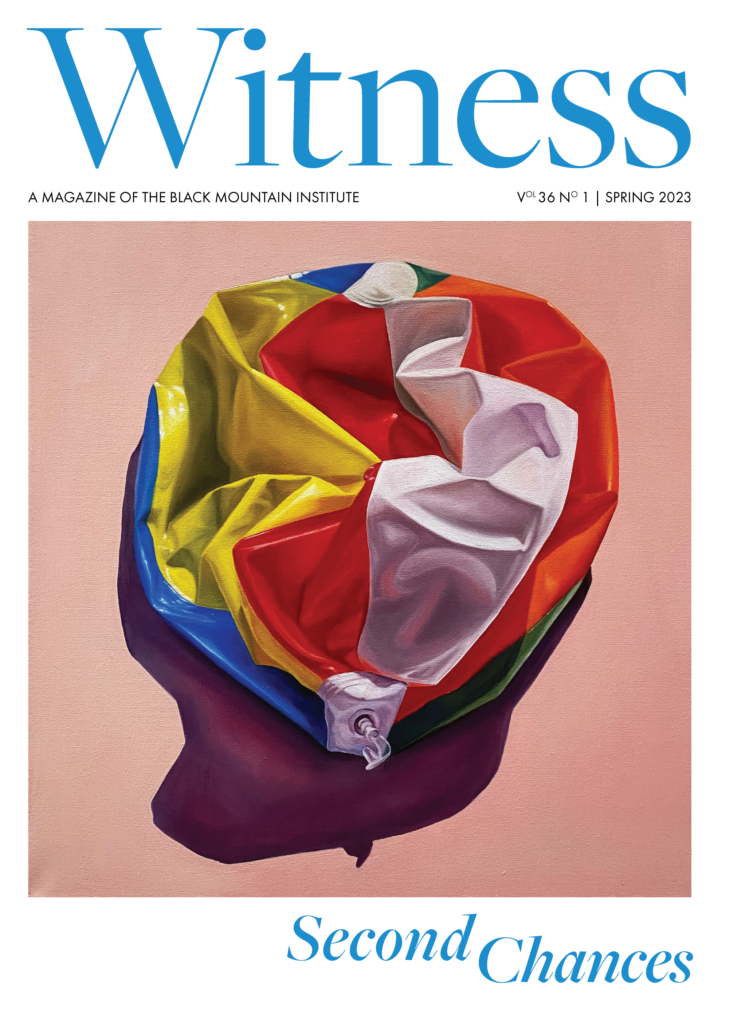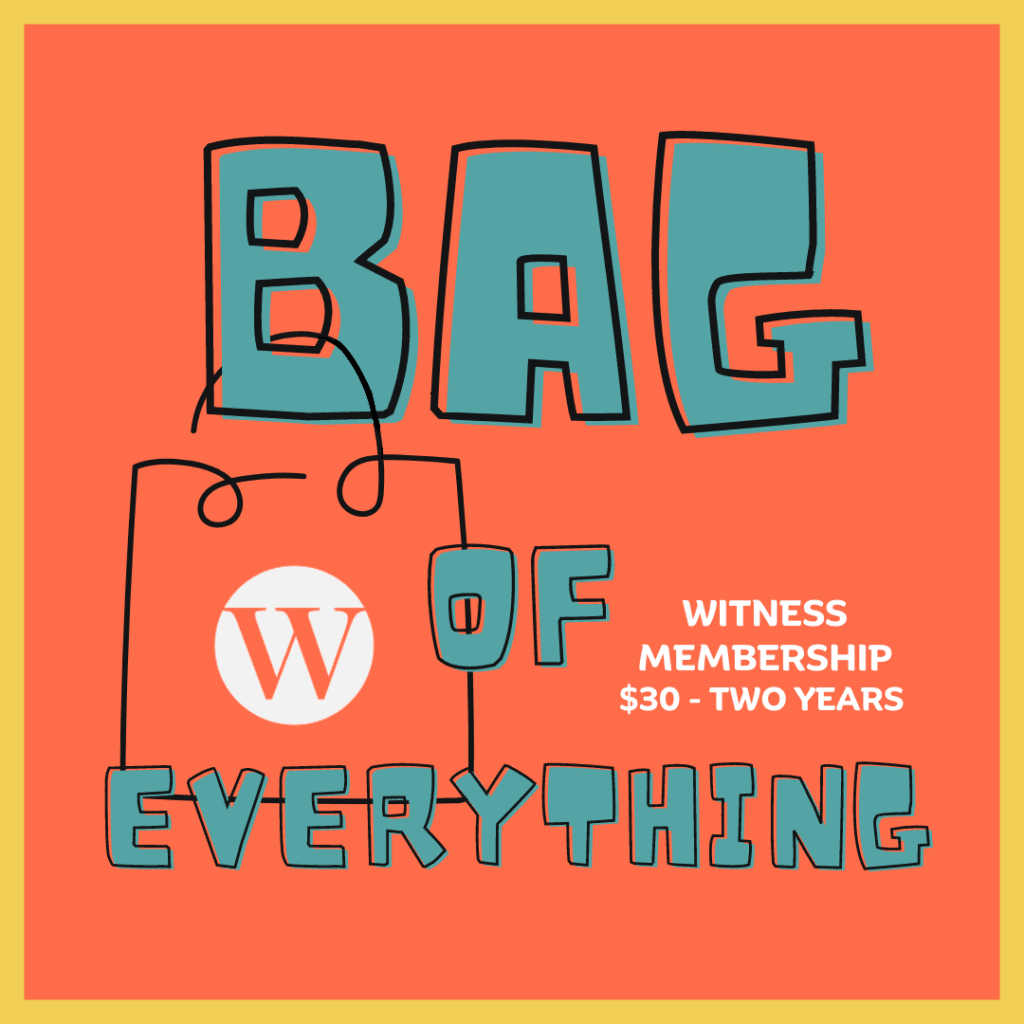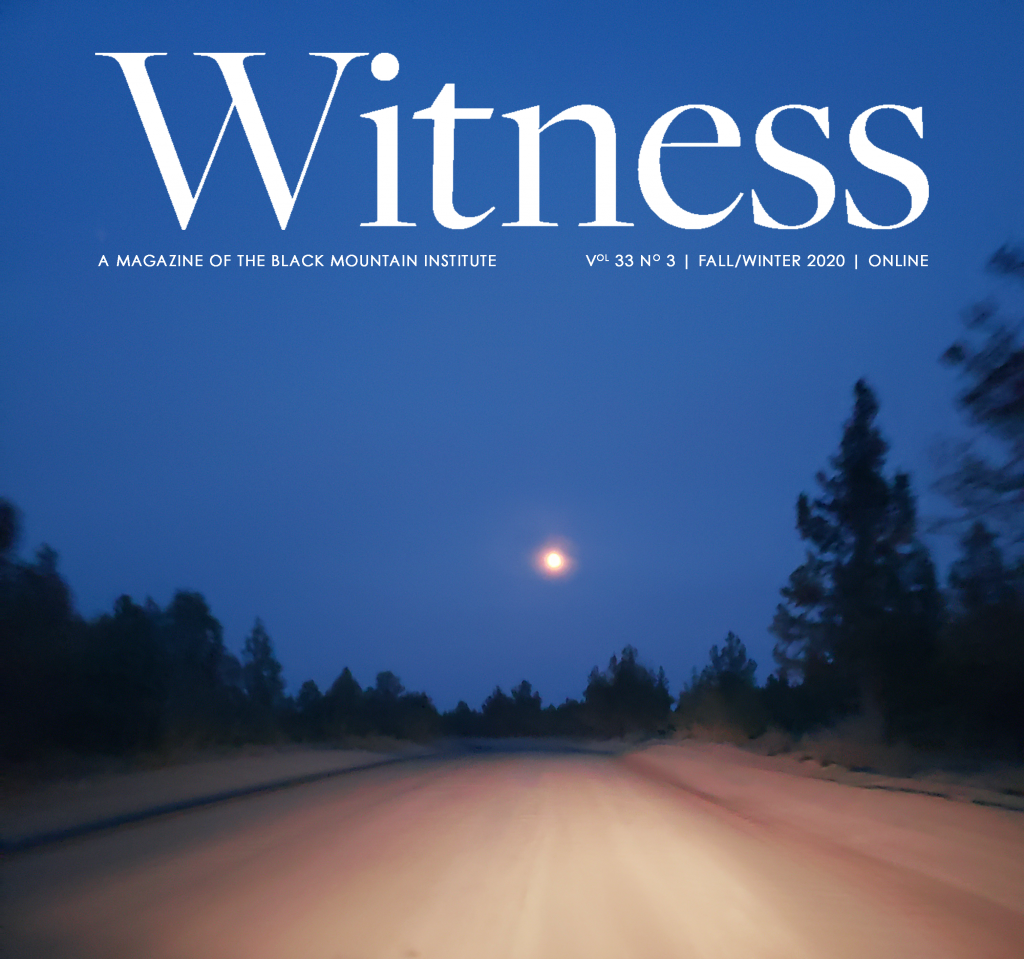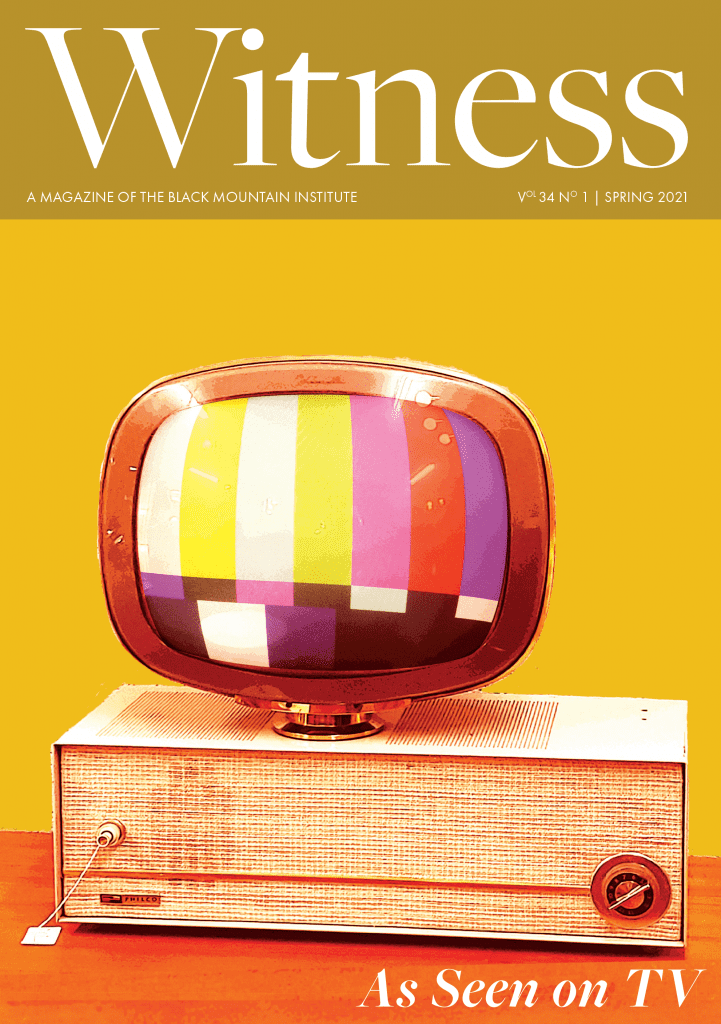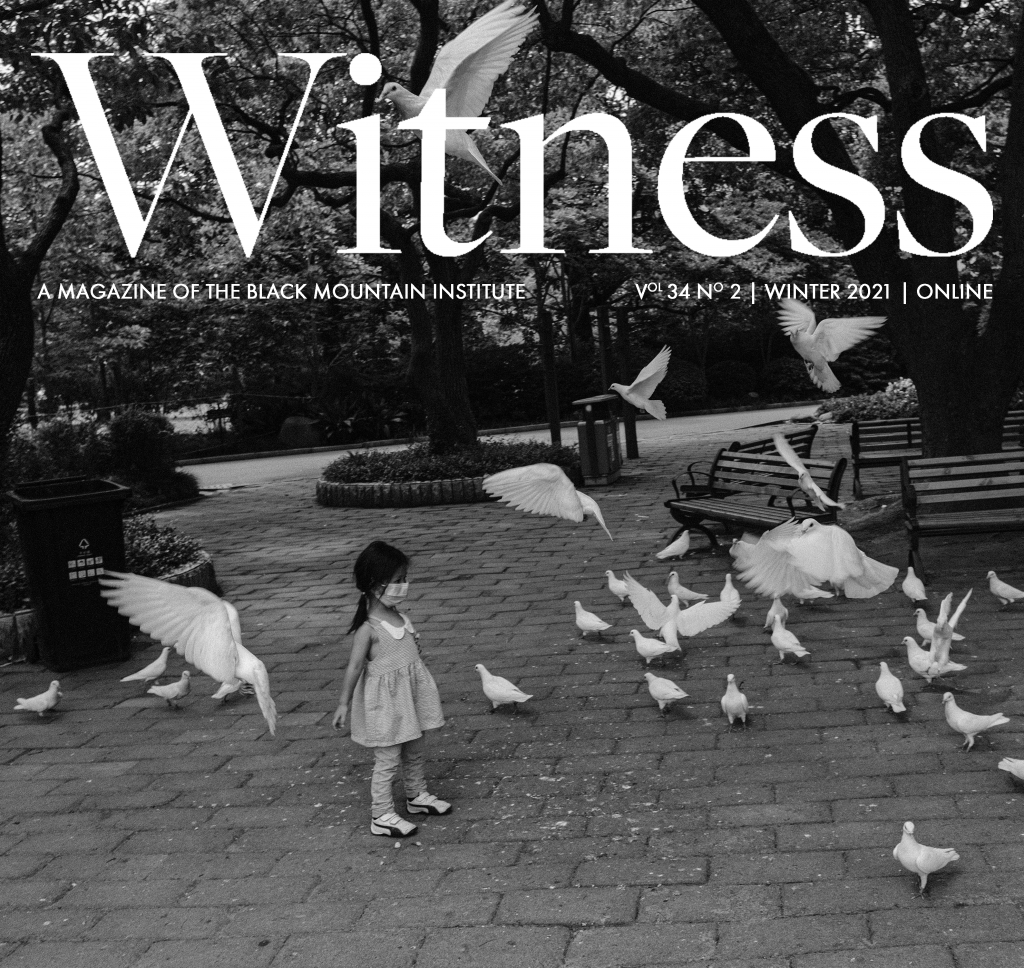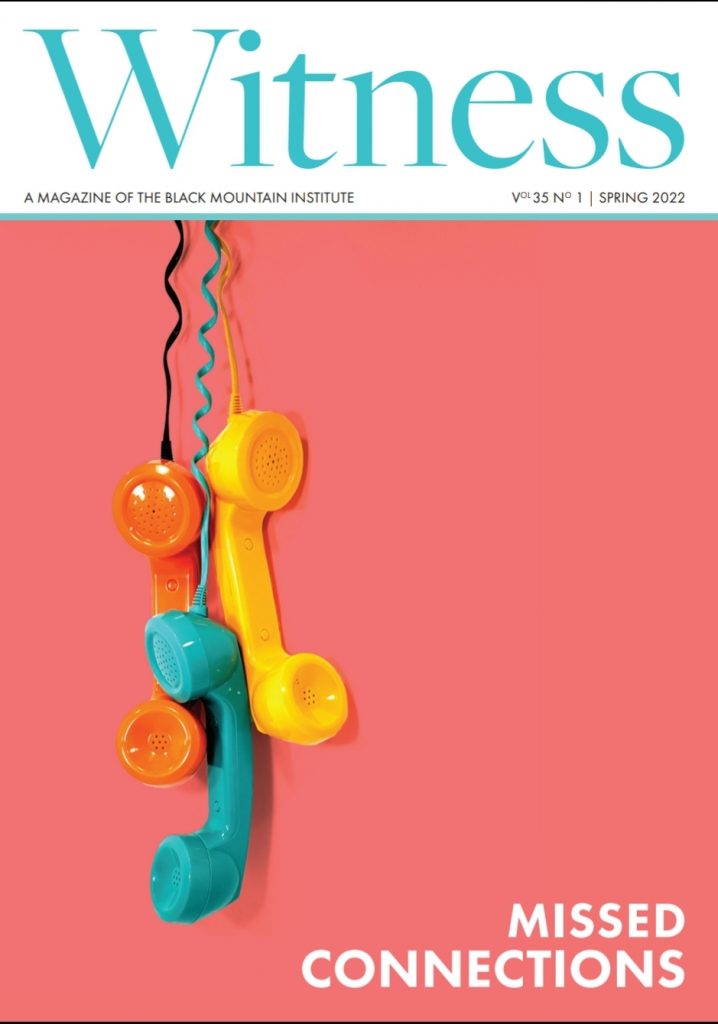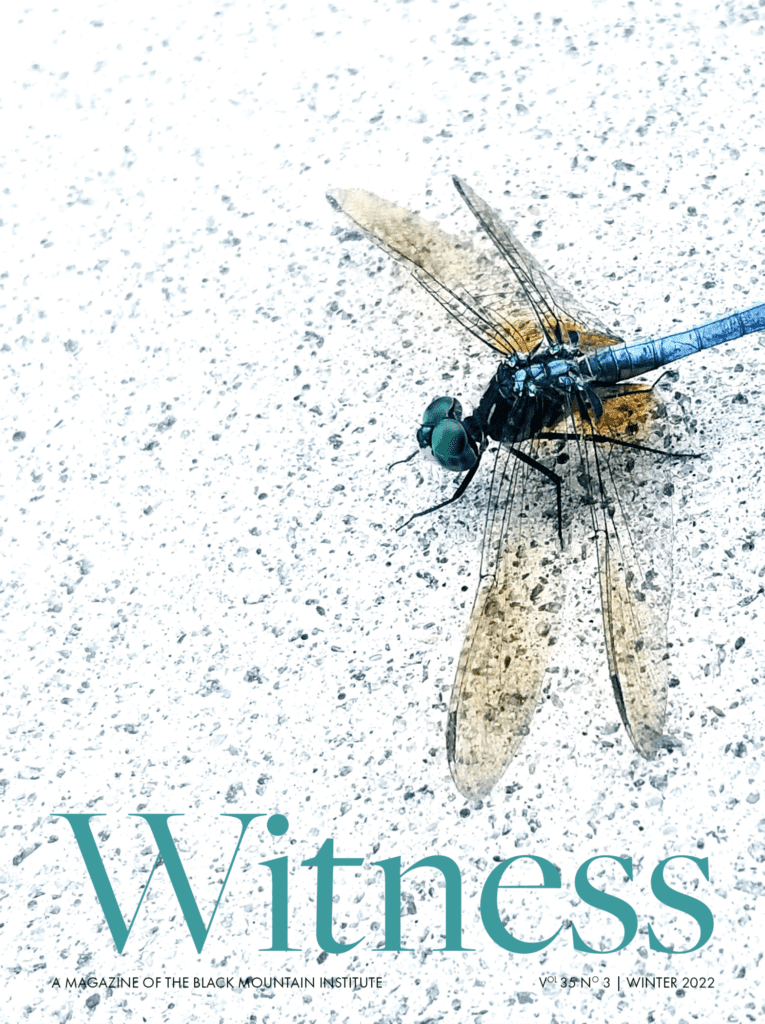(Page 2 of 2)
In order for me to speak in such a way that disavows violence (or that mitigates the violence inherent in speech), I must place my body, through my words, in your hands.
“Not truth,” writes Oppen, “but each other.”
And yet from Descartes’ time to the present, the self, rather than being seen as originating co-dependently with the world, thinks itself into being.
Hamlet’s problem is our own: being or nothingness. Ontology. Our more recent questions about absence and presence (the difference between the chair I speak of and the one I sit on) are perhaps extensions of the same. But coincident with our being in the world is our interruption of its continuity, or its interruption of ours. Something precedes ontology, but what?
Is to write to launch a red balloon? Can this essay fill, as though with helium, and lift the words above the fray, where they may freely float, indifferent to the world below? Should we set our words, like aeronauts, inside balloons, or does the lightness of their passage, in a world both violated and violating, betray an impossible position?
So I break off the ends of my thought, defer my theses—or maybe they have never been anything more than motivating principles that, like the decussating paths of birds in flight, approach one another from time to time only to diverge once more.
My propositions: errant balloons pushed along by the wind.
—
For Levinas the question is not whether being is, but how it justifies itself—and in relation to whom or to what. If he’s right, then another question lurks behind the work of art: how does it justify its existence in relation to the spaces it inhabits and the persons with whom it interacts? How does writing—no, how does a writer uncover himself? How does he reveal his face?
Interruption, writes Levinas, is a way to guarantee what Oppen wants: not truth, but each other—that the other sees our face and we theirs. It is a way to keep what we are saying from freezing, from solidifying, from standing still. Inasmuch as ethics involves the “risky uncovering of oneself, in sincerity, the breaking up of inwardness and the abandon of all shelter, exposure to traumas, vulnerability,” interruption is an ethical tool.
And so the physical interruption of the woman walking through the shot at the beginning of Flight of the Red Balloon is also metaphysical. One sees her actual face, but below it one discerns another face: a different, albeit overlapping, reality pauses and turns its head our way.
Two friends have a conversation in a café—a child interjects. Or, in the middle of the play, an intermission. In the middle of the show, a commercial. Even the eye interrupts itself: to see an object properly the eyes turn away from it, only to turn back to it again. An image requires its interruption.
In each instance, there is a breaking through, or between: the rupture of one plane of reality by another.
The mother and son at the center of Flight of the Red Balloon move through their scenes separated by an almost tangible veil of mutual incomprehension. They ask each other in turn, “Are you okay?” little knowing what that might mean for one another. The child, who wears a Brechtian placard on his t-shirt (“I change the world”) occupies a reality fully removed from that of his mother, the hectic pace of whose life would be unnerving were it not for the quiet, playful spaces the son carves out around her. And yet these two realities coexist: the world of the mother, who happens to be a puppeteer, and the world of the child, in which everything is potentially a puppet—that is, a realism conceived of in play.
The film’s unrelenting melancholy consists in the fact that the child will lose his childhood, which he may later try to regain—perhaps, like his mother, through art. Again, Hou suggests it is the tension between our real and imagined worlds—between the “real” trees and the darkened copies of them—that animates both. Art is not life, nor life art, though each must allow for the other, must provide a space in which to embrace mundane and even violent interruptions. A fist. A balloon. A woman who pauses before the camera, stares, then quickly hurries away.

